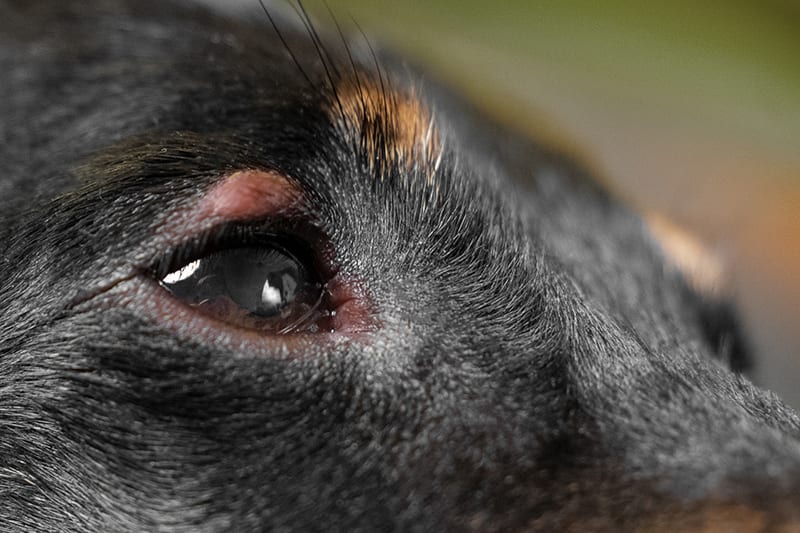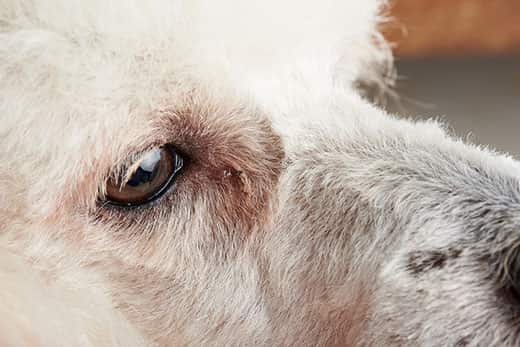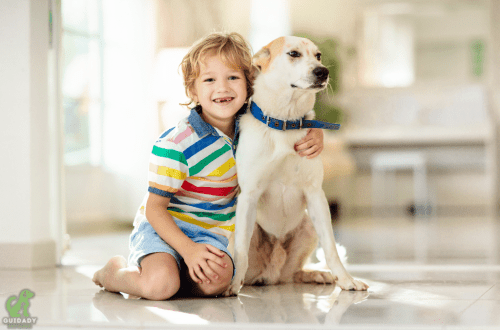
Conjunctivitis in a dog: causes, treatment
If your dog has symptoms such as swelling of the eyelid and discharge from the eye, it may be suffering from a condition called conjunctivitis. Sounds alarming, but don’t panic. The likelihood of a pet contracting conjunctivitis, also known as “pink eye”, is actually quite small. What should I do if my dog has conjunctivitis?
Contents
- What is conjunctivitis in dogs, or “pink eye”
- Can you get conjunctivitis from a dog?
- Conjunctivitis of the dog’s eye: breed predisposition
- What does conjunctivitis look like in dogs?
- Treating Conjunctivitis in Dogs: When to See a Doctor
- Diagnosis of Conjunctivitis in Dogs
- How to treat conjunctivitis in a dog
- How to treat conjunctivitis in your dog at home
What is conjunctivitis in dogs, or “pink eye”
 Conjunctivitis is an inflammation of the lining of the eye, or the pink tissue inside the eyelid, called the conjunctiva. There are two types of conjunctivitis in dogs. Infectious conjunctivitis, often referred to as “pink eye,” is caused by a viral or bacterial infection and is rare, according to the veterinary scientific journal dvm360.
Conjunctivitis is an inflammation of the lining of the eye, or the pink tissue inside the eyelid, called the conjunctiva. There are two types of conjunctivitis in dogs. Infectious conjunctivitis, often referred to as “pink eye,” is caused by a viral or bacterial infection and is rare, according to the veterinary scientific journal dvm360.
Most often, dogs develop non-infectious conjunctivitis, which can be due to a number of reasons. As a rule, such causes are associated with allergies, an irritant in the eye, damage or injury to the eye, or a congenital anomaly. Tufts University’s Cummings School of Veterinary Medicine adds that conjunctivitis in dogs can be a sign of a more serious health problem, like distemper.
Can you get conjunctivitis from a dog?
Noninfectious conjunctivitis in dogs is not contagious. However, if conjunctivitis is caused in a dog by a rare bacterial infection or virus, it can be passed on to other dogs. If a pet is suspected of having conjunctivitis, it is best to temporarily keep it separate from other dogs and wash hands thoroughly with soap and water after contact to prevent the infection from spreading to other animals.
If pets usually share food and water bowls and bedding, a pet with conjunctivitis should be provided with a separate dish and bed until the conjunctivitis resolves. At the same time, they should be thoroughly washed and laundered. Everyone should be informed about the condition of the dog and precautions – walkers, dog sitters and friends in the dog area.
Conjunctivitis of the dog’s eye: breed predisposition
According to Tufts, conjunctivitis can occur in any dog, including outbreds. However, some breeds are prone to developing diseases that create an additional risk of conjunctivitis. So, Cocker Spaniels, Bulldogs and Miniature Schnauzers, for example, are prone to dry eyes, which often leads to the development of non-infectious conjunctivitis.
A condition called entropion, where the rim of a dog’s eyelid turns inside the eye, can also cause inflammation of the conjunctiva. Shar-Peis and Chow-Chows, in particular, are predisposed to this condition.
What does conjunctivitis look like in dogs?
In order to recognize conjunctivitis in a dog, the owner needs to pay attention to the following signs:
red or swollen eyes;
discharge from the eyes;
stuck together, squinted eyelids;
swelling of the mucous membrane of the eyelids (conjunctiva);
rubbing or scratching the eye due to itching or discomfort.
Treating Conjunctivitis in Dogs: When to See a Doctor
If signs of the disease appear, show the pet to the doctor immediately. He will determine what type of disease the dog has: pink eye or non-infectious conjunctivitis.
Although non-infectious conjunctivitis is not classified as a serious condition, it will not go away on its own without proper treatment and may be a sign of a more serious health problem. In addition, if conjunctivitis is left untreated, the pet may suffer permanent eye injury or even become blind.
Diagnosis of Conjunctivitis in Dogs
As Tufts writes, in addition to a thorough examination of the dog’s eyes and eyelids, a veterinarian can conduct a comprehensive medical examination to assess its overall health. Diagnostic tests that a veterinarian may perform include a bacterial culture test, a fluorescein stain test to check the cornea for ulcers or abrasions, a Schirmer test to measure tear production, and a test for glaucoma. He may also take several blood tests to rule out primary pathologies.
How to treat conjunctivitis in a dog
The course of treatment your veterinarian prescribes will ultimately depend on the underlying cause of the conjunctivitis. If the specialist determines that the dog does have conjunctivitis, she will most likely be prescribed a bactericidal or fungicidal ointment for topical application. Additionally, the pet may be prescribed anti-inflammatory drugs to reduce swelling and discomfort.
If the cause of irritation and swelling is a foreign body in the eye, the four-legged friend may require surgery under general anesthesia so that the veterinarian can remove it without risking further damage to the eye. If conjunctivitis turns out to be a sign of a more serious disease, the specialist will offer a treatment plan for the identified pathology.
How to treat conjunctivitis in your dog at home
Before using any herbal or homeopathic remedies, a veterinarian should be consulted to ensure they contain safe ingredients and will not interact dangerously with any medications prescribed to the dog or interfere with the treatment of the underlying condition.
Wash your hands thoroughly before touching your dog’s eyes and face to avoid further irritation.
Although non-infectious conjunctivitis itself is not dangerous to the pet and simply creates unnecessary discomfort, this does not mean that its symptoms should be taken lightly.
It is important to take prompt action to help your veterinarian correctly diagnose and prescribe treatment to protect your dog’s eyesight and overall health.





